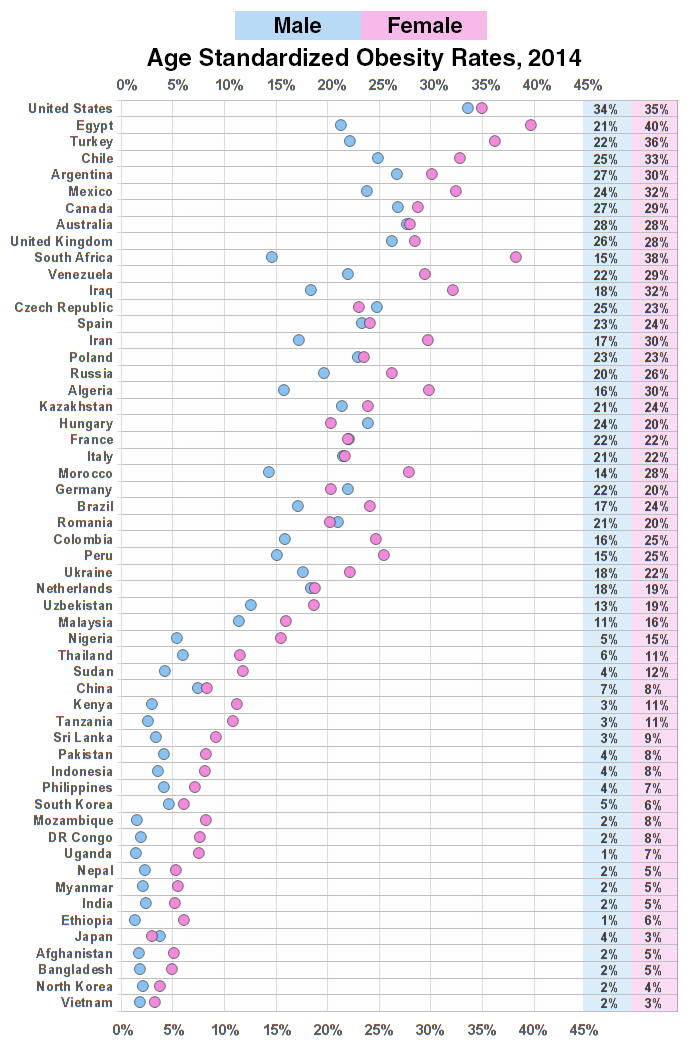The researchers compiled data from 1,698 obesity-related studies, covering 19.2 million people in 186 countries. They then used the information to estimate the distribution of body mass index (BMI) for every country in the world, for every year from 1975 to 2014.
Between 1975 and 2014, obesity rates increased from 3.2% to 10.8% for men, and from 6.4% to 14.9% for women.
Those numbers translate to 105 million obese adults in 1975, and 641 million obese adults in 2014, as shown in the chart below. During the same period the world population increased from 4 billion to 7.2 billion.
The study also estimates that 2.3% of the world’s men and 5% of the world’s women are severely obese. In 1975, the prevalence of severe obesity was just a fraction of 1% for both genders.
In the U.S., obesity rates for men and women are about the same, 34% and 35% respectively. For comparison, Egypt, Turkey, and South Africa have higher rates of female obesity than the U.S. But their obesity rates for males are far lower (between 13% and 19% below the U.S. male obesity rate).
If the post-2000 trends continue, by 2025, it projects a worldwide obesity rate of 18% for men and 21% in women. Of those, it estimates 6% of men and 9% of women will be severely obese.
Via metrocosm.com
Between 1975 and 2014, obesity rates increased from 3.2% to 10.8% for men, and from 6.4% to 14.9% for women.
Those numbers translate to 105 million obese adults in 1975, and 641 million obese adults in 2014, as shown in the chart below. During the same period the world population increased from 4 billion to 7.2 billion.
The study also estimates that 2.3% of the world’s men and 5% of the world’s women are severely obese. In 1975, the prevalence of severe obesity was just a fraction of 1% for both genders.
In the U.S., obesity rates for men and women are about the same, 34% and 35% respectively. For comparison, Egypt, Turkey, and South Africa have higher rates of female obesity than the U.S. But their obesity rates for males are far lower (between 13% and 19% below the U.S. male obesity rate).
If the post-2000 trends continue, by 2025, it projects a worldwide obesity rate of 18% for men and 21% in women. Of those, it estimates 6% of men and 9% of women will be severely obese.
Via metrocosm.com



This post may contain affiliate links. As an Amazon Associate, I earn from qualifying purchases.